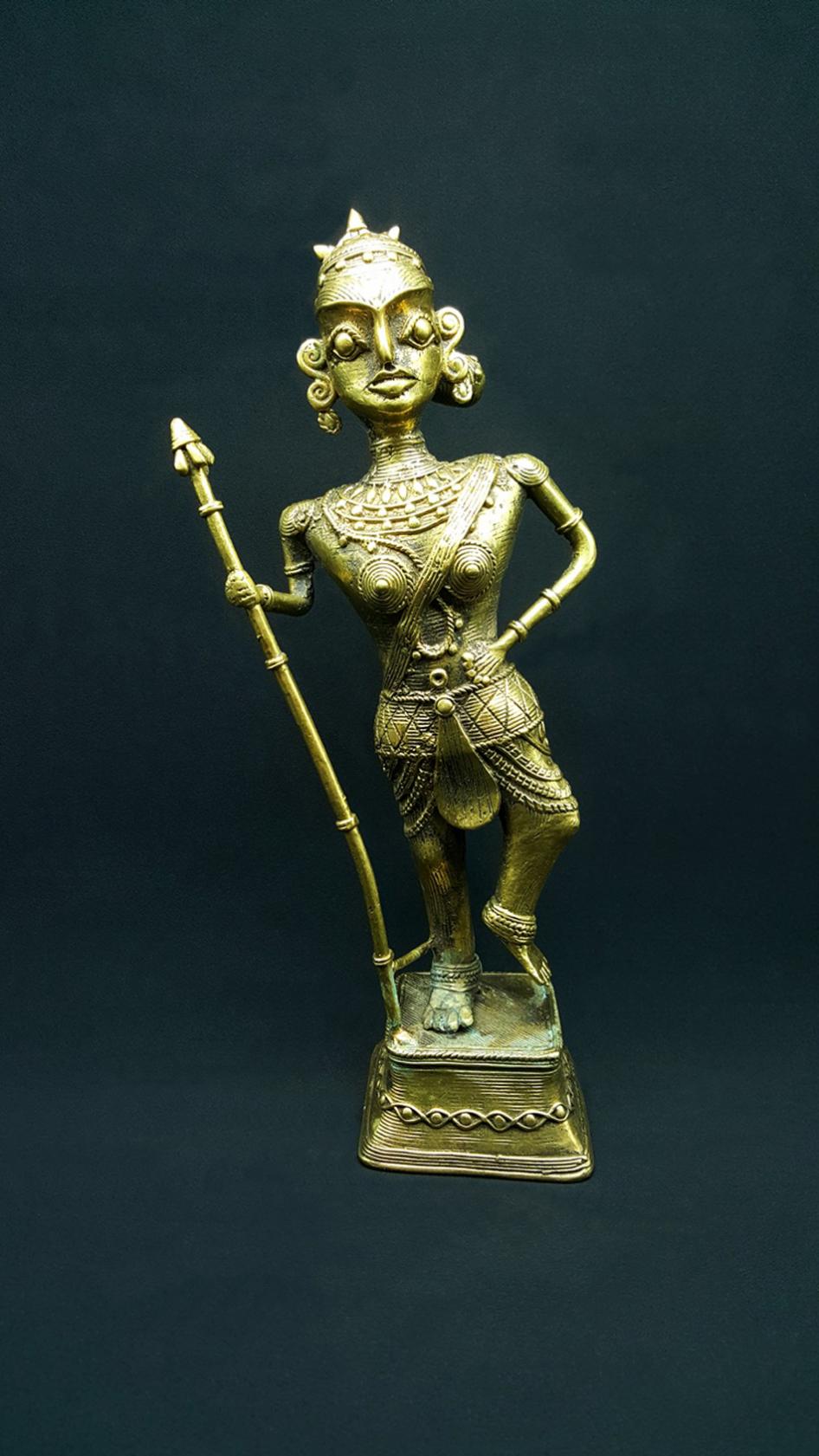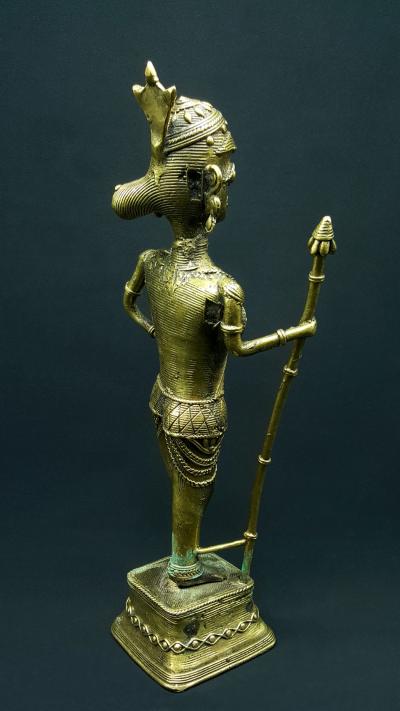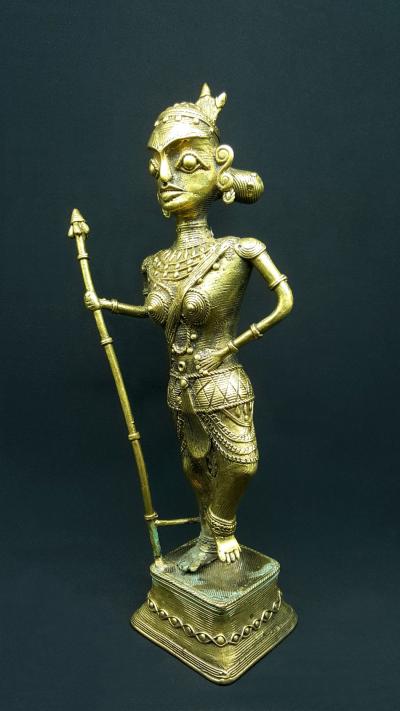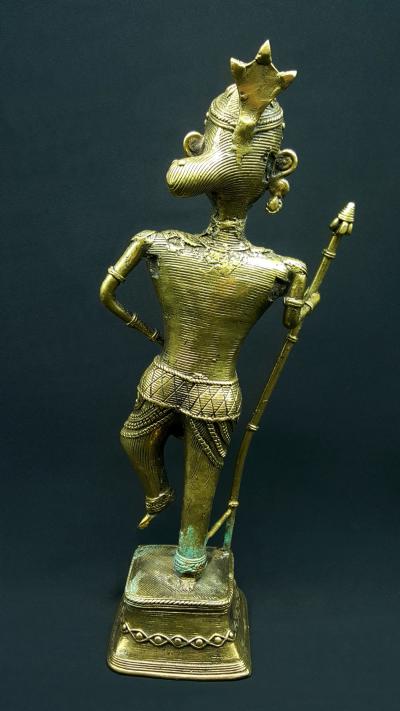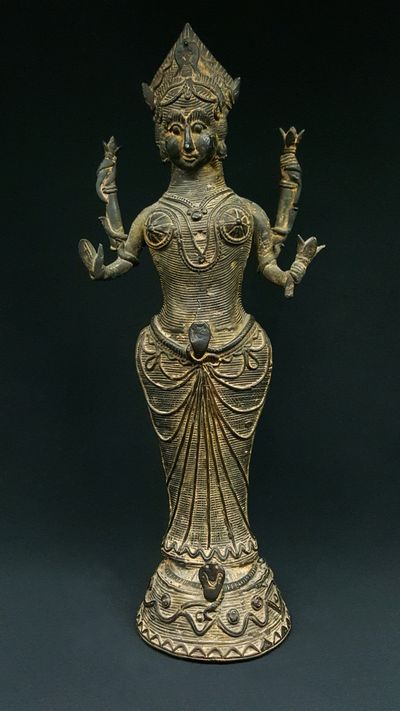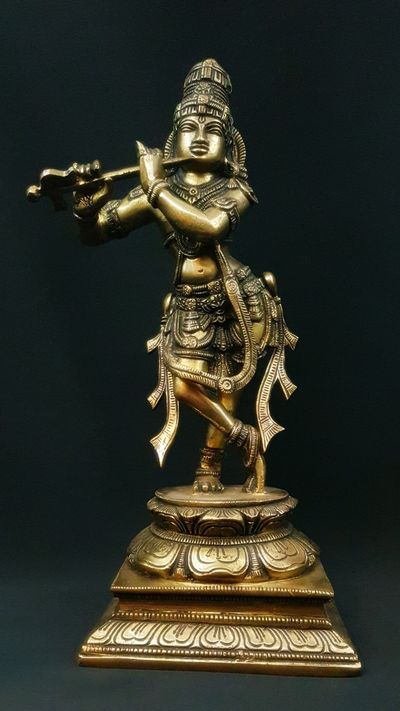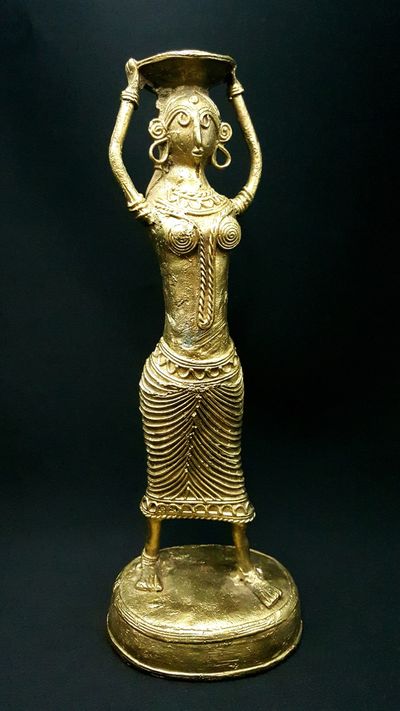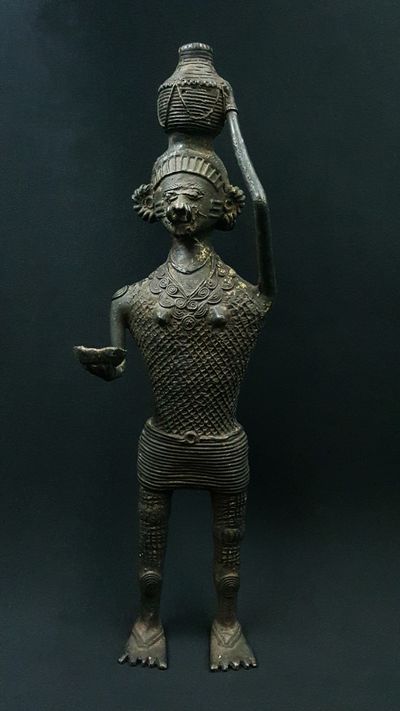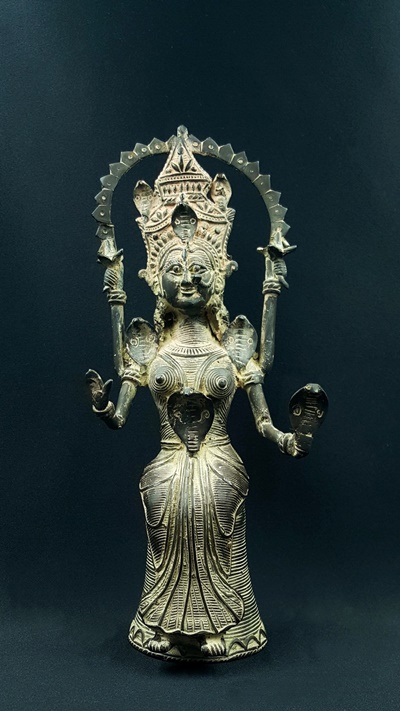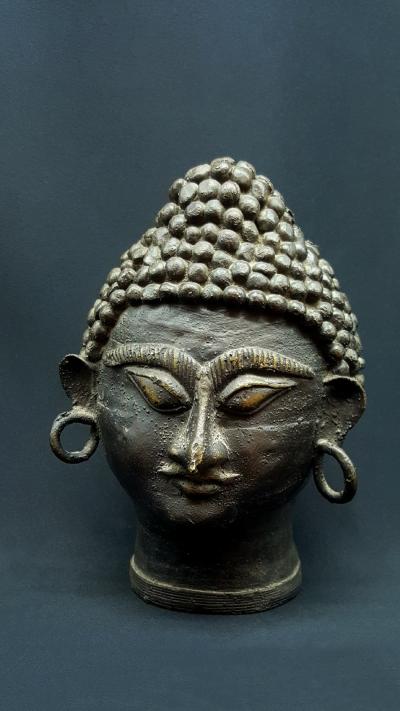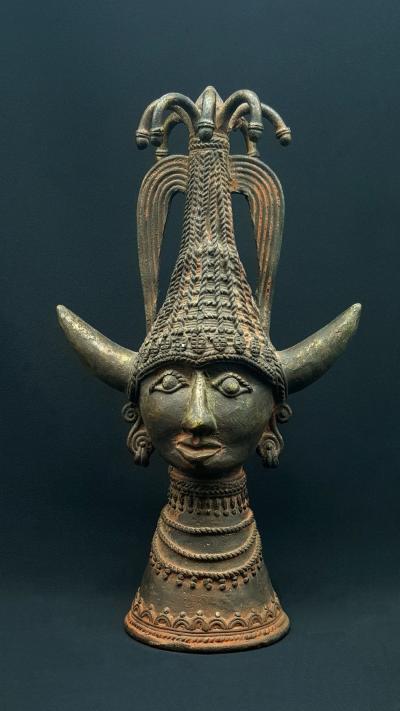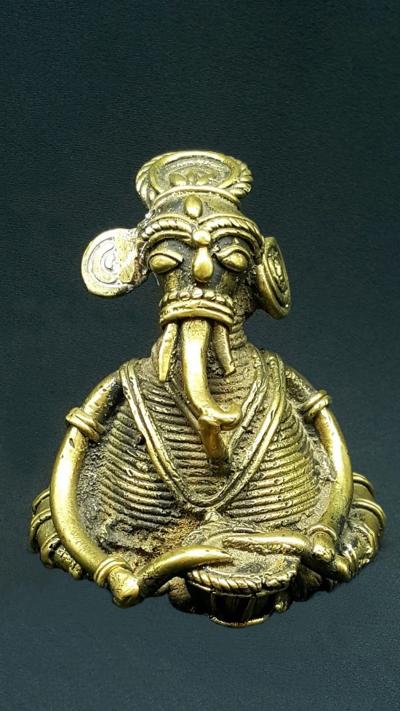Statue La Danseuse
Force et grâce
€165.00
Statue tribale Bastar en laiton de l’ Inde du Sud représentant une femme en habit de cérémonie lors d’une fête En savoir plus...
Hauteur : 29.5 cm
Poids : 1.110 Kg
Art sacré
Cire perdue
Origine : Chattisgarh - Inde
Livraison gratuite UE, Norvège et Suisse
Description
Les Bastars
Le Bastar est un district de l’Inde du Sud dans l’État de Chattisgarh, il fût un royaume indépendant du 14° siècle jusqu’à son intégration à l’Inde en 1948.
La population tribale représente 70% de la population du district de Bastar: les principales tribus sont les Gonds – les Abhuj Maria et les Bhatras. La plupart ont gardé leur tradition (art culinaire, vestimentaire, fêtes…) et leur religion animiste.
Les tribus vivent encore principalement de l’agriculture et des ressources tirées de la forêt (chasse, plantes médicinales, bois…).
Certaines tribus se consacrent à la réalisation de statues en laiton depuis plus de 4000 ans. Cet art, que l’on retrouve aussi dans les États du Madhya Pradesh, de l’Odisha, dans l’Ouest Bengal, du Bihar... est appelé Dokra.
L'art Dokra : un savoir millénaire dans la fabrication de statues
Cet art traditionnel et artisanal n’a pas changé depuis des millénaires (+ de 4000 ans) et la technique utilisée est toujours celle de la cire perdue : un modèle grossier en argile est réalisé puis recouvert de cire par l’artiste qui va lui donner sa forme définitive avec ses détails. L’ensemble est à nouveau recouvert d’un mélange argileux puis chauffé dans un foyer ouvert où un alliage cuivreux sera coulé. Voir Blog.
Les objets produits par les artistes Dokra peuvent être de nature usuels : coupelle, bougeoir… des instruments de musiques (cuivres), ou bien artistiques tels que des bijoux, des animaux : chevaux, éléphants, tortues…, des statues d’hommes et femmes représentant des scènes de vies quotidiennes et des divinités hindous adoptées par les tribus : Ganesh, Lakshmi, …
Posture Debout, le corps légèrement penchée sur la gauche, cette femme Bastar est revêtue de ses attributs de fête pour cette cérémonie où la danse joue un rôle primordial. La jambe gauche est légèrement relevée marquant le pas de danse tandis que le bras droit s’appuie sur un bâton.
Plusieurs magnifiques bandeaux composés de pièces et de coquillages forment une coiffure de fête sur son front et ses cheveux, tirés en arrière, se terminent en chignon sur la gauche typique des femmes tribales indiennes Bastar. Une coiffe de plumes rehaussent l’ensemble et lui donne un port de reine que le bâton en forme de sceptre confirme.
Les bijoux expriment la richesse, cette femme portent de nombreux colliers (ainsi que boucles d’oreilles, bracelets et anneaux de jambes) qui expriment sa position sociale et renforcent sa beauté.
Le pagne est aussi richement ornementé de multiples broderies.
L’artisan a parfaitement fait ressortir la forte présence de cette femme. Elle oscille entre grâce et puissance, mouvement et stabilité.
